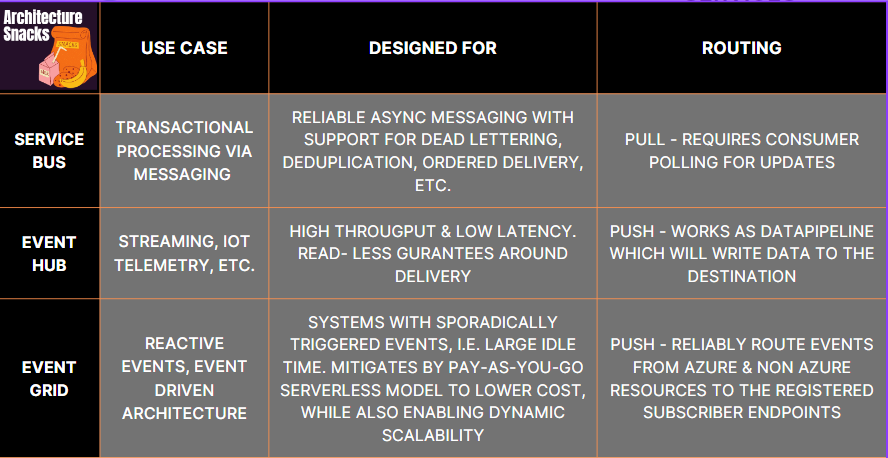Decoding Azure Messaging: Service Bus, Event Hub, and Event Grid
This short post aims to shed light on Azure's offering for messaging architecture: Service Bus, Event Hub, and Event Grid, and guide you in making an informed decision.
Understanding the Basics: Messages and Events
Before we dive into the specifics of each service, it's crucial to understand the difference between messages and events. Messages are contractual in nature, carrying a specific meaning and value of an operation in a processing chain. They may be time-sensitive, require specific sequencing, or contain explicit commands for action. The sender often expects processing feedback from the receiver, creating a strong coupling between the two.
On the other hand, events are more about informing rather than conveying intent. They capture a fact and communicate it. The consumer of the event can process the fact as it pleases, without fulfilling any specific expectations held by the publisher. This results in a very loose coupling, and removing these consumers doesn’t impact the source application’s functional integrity.
Azure Service Bus: For Complex Messaging
Azure Service Bus is designed for high-value enterprise messaging. It can handle a high volume of messages and enables you to build reliable and secure applications. Service Bus is ideal for workflows where message loss is expensive and hard to recover, and where messages may be time-sensitive or require specific sequencing.
Azure Event Hub: For High Volume Data Ingestion
Azure Event Hub is a big data streaming platform and event ingestion service. It can receive and process millions of events per second, making it perfect for telemetry and distributed data streaming.
Azure Event Grid: For Event-Based Architecture
Event Grid is an event routing service and is ideal for scenarios where you need to react to status changes in your application or infrastructure - main focus here being that these status changes events are happening relatively rare and independent of each other (another way of saying this is that these events are loosely correlated, as in opposition to streaming data point events). These independent events can be processed in parallel using web services or "serverless" functions. The most efficient way to dispatch these events is to "push" them to handlers like websites, Azure Functions, or Azure Logic Apps, which can manage processing capacity. By integrating Azure Event Grid with existing services, customers avoid paying for idle functionality, ensuring processing capacity is ready in milliseconds when an event occurs.
Making the Right Choice
Remember, the goal is not to pick one over the other, but to understand how each service can be used to its full potential in different scenarios, in many cases, it is perfectly reasonable to have a combination of two or all three together within your system as long as it complements your architecture. For instance, you might be interested to integrate Service Bus with Event Grid to lower Azure costs driven by constant polling of topics in Service Bus whenever your system messaging traffic is not dense enough across longer timespans.
Here, however, are some quick recap of guidelines in a single table:


